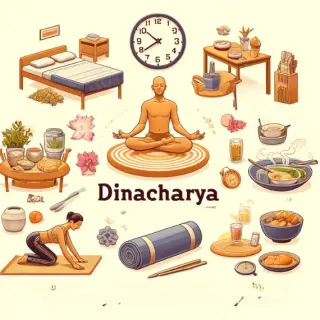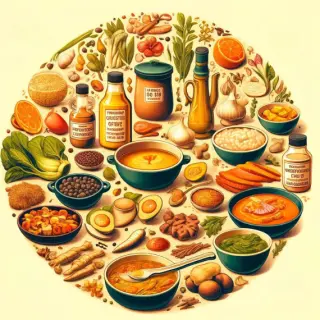Balancing Vata Dosha: A Comprehensive Guide to Lifestyle, Diet, and Yoga Practices

The Vata dosha, one of the three primary doshas in Ayurveda, is characterized by the qualities of air and ether. It is light, dry, cold, and mobile—qualities that influence both the physical and mental states of those who have a predominant Vata constitution. When balanced, Vata promotes creativity, vitality, and expressiveness, but an imbalance can lead to various physical and mental challenges.
Common Qualities and Signs of Vata Dosha Imbalance
Physically, individuals with a predominant Vata dosha may experience dry skin and hair, indigestion, bloating, and unintended weight loss. Mentally, an imbalanced Vata often manifests as overthinking, excessive worrying, stress, insomnia, and anxiety, with anxiety being the predominant emotional state.
Balancing Vata Dosha Through Lifestyle Adjustments
To counteract the dry and erratic nature of Vata, incorporating grounding and nourishing practices into daily life can be incredibly beneficial:

Ayurvedic Abhyanga Massage
A nightly routine of self-massage with warm oil can soothe the nervous system, promote better sleep, and moisturize dry skin. Sesame oil is particularly recommended for its warming and grounding properties.

Dinacharya (Ayurvedic Daily Routine)
Establishing a consistent daily routine helps stabilize Vata’s erratic tendencies. This includes regular meal times, sleep schedules, and incorporating gentle daily exercise.
Dietary Recommendations for Vata Dosha
Diet plays a crucial role in balancing Vata. A Vata-pacifying diet includes:
Warm, Cooked Foods
Opt for nourishing soups, stews, and one-pot meals that are easy to digest.
Healthy Fats
Include ample healthy fats in your diet, such as ghee and olive oil, which are important for maintaining internal moisture and warmth.
Spices
Mild spices like turmeric, ginger, and cumin not only enhance flavor but also increase digestive fire, reduce gas, and support overall digestion.

Yoga and Meditation for Vata Dosha Balancing
Yoga practices for Vata should focus on warming the body and calming the mind:
- Yoga Poses: Favor grounding and stability-focused poses like Warrior II, Tree Pose, and seated forward bends. These poses decrease Vata’s cold and mobile nature.
- Breathwork (Pranayama): Techniques such as diaphragmatic breathing or Nadi Shodhana (Alternate Nostril Breathing) can be very calming and balancing for Vata.
- Meditation: Regular meditation helps to quiet the overactive Vata mind, reducing anxiety and improving focus and mental clarity.
Integrating Practices for Holistic Balance
Combining these practices offers a holistic approach to managing Vata dosha. Starting with dietary adjustments, integrating appropriate physical activity, and establishing a nurturing daily routine can profoundly stabilize Vata’s variability.
For individuals looking to deepen their understanding and application of these practices, consulting with an Ayurvedic practitioner can provide personalized guidance tailored to one’s specific constitution and needs.
By embracing the principles of Ayurveda and adapting lifestyle and dietary habits, individuals with a Vata predominance can achieve a better balance of body, mind, and spirit, leading to a healthier, more harmonious life.
Ready to Deepen Your Ayurveda Journey?
Explore our specialized programs to harmonize your life with ancient wisdom.


